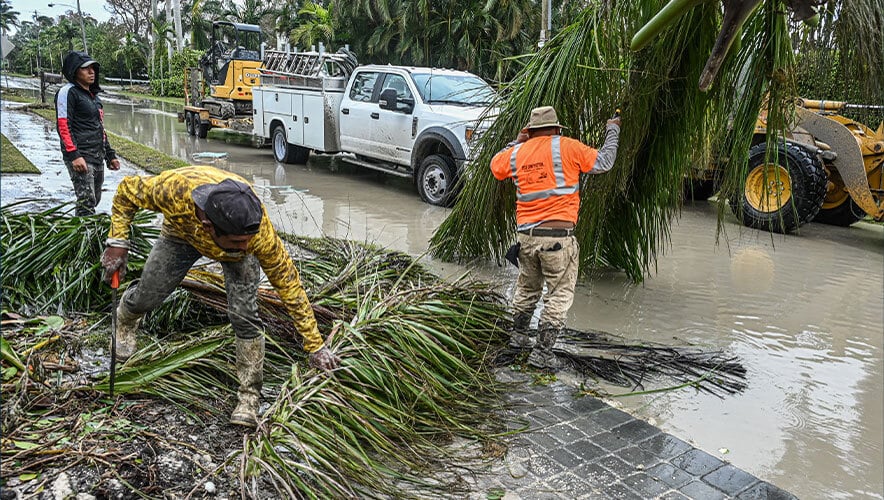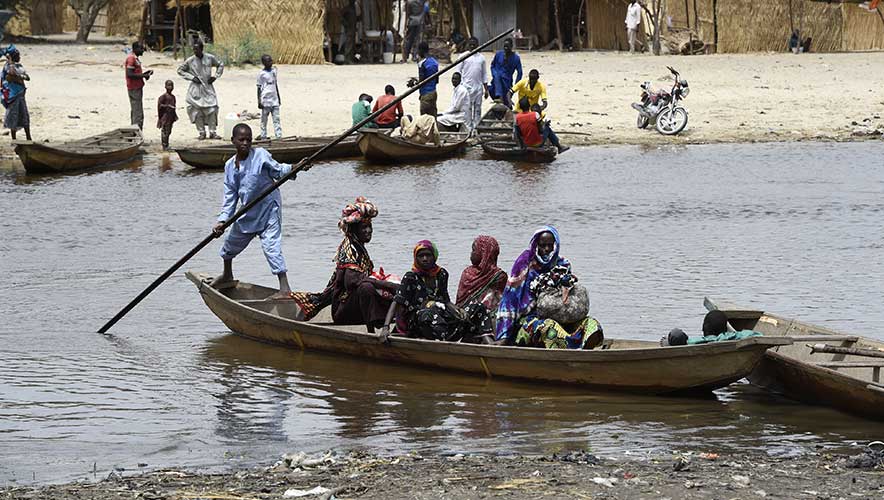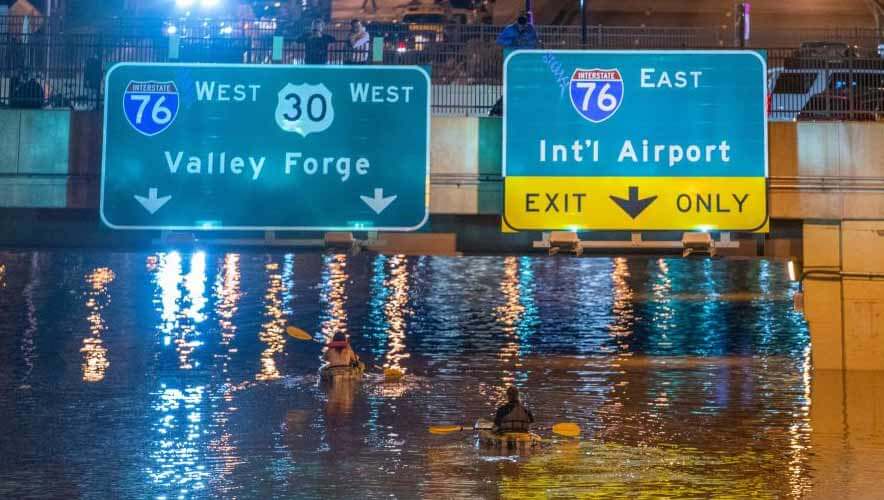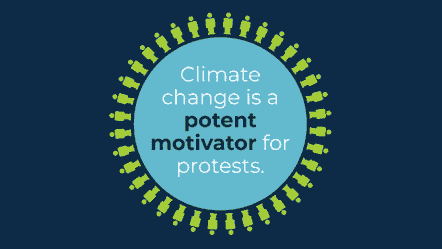Sword and Shield: Two Ways to Leverage Insurance Against Climate Risks
Organizations are very familiar with the need to have insurance that can help offset the costs of natural disaster-related damage and business disruptions. But as climate change exacerbates the intensity and frequency of major storms, organizations may also need to turn to insurance to help with preparedness.
There are two major impacts of climate change on organizations right now, says Dominic Jones, senior vice president of business development at Everbridge. One is the physical impact, including changes in temperature that drive changes in weather patterns—producing more hurricanes, tornadoes, and high-level impact. Infrastructure-heavy organizations, such as logistical businesses or those that rely on a global supply chain—are most strongly disrupted by these events.
The second is centered on risk and compliance, including “the ESG (environmental, social, governance) mandates that are now coming out and—ultimately—what an enterprise will be required to track and report on,” Jones says.
In March 2022, the U.S. Securities and Exchange Commission (SEC) released plans to enhance and standardize climate-related disclosures for investors, which would require publicly listed companies to disclose risks that are “reasonably likely to have a material impact on their business, results of operations, or financial condition” and to disclose information about greenhouse gas emissions—either direct or indirect. Many expect that the rules will be finalized in 2023, according to Reuters, and that will require organizations to grapple with the enormous challenge of measuring and reporting out their climate risks and resilience efforts.
Although these frameworks are currently maturing, Jones says, organizations will need to be able to demonstrate the expertise, systems, and ability to detect, mitigate, and transfer the risk coming from climate-related incidents.
“You also need to be able to demonstrate that you have the right response capabilities and—equally—that you understand how to use the right finance partners and the right insurance partners to be able to support you for that risk transfer element,” he says.
“Even small and mid-sized organizations are now being asked by Nasdaq to report their ESG status,” Jones adds. “Not only how they are going to mitigate and manage their climate responsibilities—so their carbon emissions and net zero goals—but also now adapt to be able to show how you’re going to be able to cope with what is the inevitable impact of climate.”
Where insurance is involved, there are two different approaches to natural disaster coverage: what Jones calls the shield and the sword approach.
The shield approach is traditional and passive—focusing on crisis recovery after an event occurs. This includes commercial damage and loss, property, and casualty insurance, and will include an assessment of damage, an adjustment process, and an eventual payout down the line.
“The sword approach, though, is how you use insurance products to be able to attack the emergency response,” Jones says.
Investing in emergency response can have a major payoff down the line—according to 2015 research from the United Nations, every dollar invested in emergency preparedness saves an average of two dollars in the future, plus a week in emergency response. “These days may translate differently into actual lives saved depending on the scale of the emergency, baseline situation of beneficiaries, and the specific investment,” the study said, “but will undoubtedly have a positive impact on the effectiveness of emergency responses and general humanitarian outcomes.”
Insurance can help with this approach through a parametric insurance policy (also called index-based insurance). Parametric solutions can cover the probability of a predefined event happening—rather than responding after an actual loss is incurred.
These policies are intended to complement traditional insurance (the shield part of the equation), not replace it. Thresholds are set to align with the client’s own business continuity plan and risk tolerance, so a company might be able to easily manage a Category 1 hurricane without outside resources, but a stronger storm could change that equation. The payment is related to the triggering event’s magnitude, not actual physical damage.
“Parametric insurance today plays a significant role in the market for disaster insurance,” according to the National Association of Insurance Commissioners (NAIC). “This type of contract is attractive because the elimination of the claims adjustment process allows money to reach policyholders much faster. Payment can be made in a matter of weeks with a parametric contract versus months or years with a standard indemnity contract. For victims of natural disasters, the speed at which payment is made can have a significant impact. Firms insuring against business interruption risk, government agencies responsible for disaster response, and non-governmental organizations (NGOs) providing assistance all benefit from receiving payout faster because resources can be deployed more rapidly at the most critical time, right after the disaster has struck.”
For example, Jones says, a company’s facility is in the path of a Category 3 hurricane 36 hours before landfall, which gives it (in many cases) a one in three chance of being impacted. If that potential impact is one of the predefined parameters in the policy, the insurer would pay out a pre-agreed amount to help fund a forward response team that could get a head-start on coordinating a response.
A second parametric trigger would be the hurricane actually hitting that site at a Category 3 strength or higher, which could launch a larger predetermined payout. The likelihood of this is much lower, so the premium is typically less, Jones says. These direct impacts could vary depending on the enterprise and its business continuity challenges. Significant rainfall (a certain amount in a specific timeframe) could delay a construction project to the point that insurance is required, for instance, or an earthquake above a certain magnitude near an enterprise’s headquarters could trigger a response, according to insurer Swiss Re.
But remember: the payout is not based on damage incurred, but is already set based on the magnitude of the event.
“The amount of payment, the parameter, and the third party responsible for verifying that the parameter was triggered must all be specified in the contract,” according to the NAIC. “The third party will usually be a government agency, for example earthquake magnitude could be determined by the measurement issued by the National Earthquake Information Center.”
Longer term parametric triggers could also be factored in. Shipping companies that rely on the Rhine River to transport goods throughout Europe have been concerned about receding water levels, which could reduce or halt barge traffic. While the risk of a dry riverbed might be small to nonexistent, “the costs of business interruption and associated revenue loss are significant,” according to professional services firm Marsh McClennan. “A parametric cover based on the water-level would help protect against lost revenue in this instance.”
Beyond climate-related risks, “advances in big data analytics, computing power and modelling processes are building more customized parametric insurance against other specific risks such as cyber, data breach, or even reputational damage,” noted the Marsh McClennan article, Parametric Insurance: A Tool to Increase Climate Resilience.
Organizations are also using these policies to “coordinate the crisis element of that process management process and go leading into recovery, making sure there’s power generation, that there are personnel able to clear things up, that there are trucks to transport things,” Jones says. Organizations can also build this response function into a subscription model. For example, Everbridge combined its data sets on climate vulnerability with insurance vendor Brown & Brown’s data for comprehensive risk and insurance packages.
“These are, if you like, service bolt-ons that are using an insurance product to finance them and turn them into a service offering so the customer doesn’t pay the full burden,” Jones says.
“Ultimately,” he adds, “it’s saving money, it’s saving lives—which is hugely important—and it’s a faster restoration of the operation.”
Claire Meyer is managing editor for Security Management. Connect with her on LinkedIn or email her directly at [email protected].












